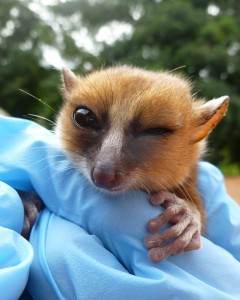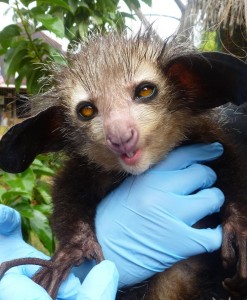My interest in working with lemurs has only recently been in development over the past year, but my love for wildlife and nature has been lifelong. It was early in 2014 that I was on the hunt for a conservation-related volunteer experience abroad. Madagascar had always been on my bucketlist of countries to visit-the abundance of unique species that can be found no where else in this world is like no other. So naturally I jumped at the chance when offered a position on a reforestation project with the Madagascar Biodiversity Partnership (MBP). What a perfect way to truly experience Madagascar while also contributing to much-needed conservation initiatives. Little did I know, I was about to fall in love with this country and never want to leave!
 Volunteering in Kianjavato, Southeast Madagascar
Volunteering in Kianjavato, Southeast Madagascar
For those of you who do not know, MBP has multiple sites across Madagascar. I was volunteering at their site in Kianjavato, in the southeast. The Kianjavato area has been largely affected by slash and burn agriculture, or tavy, over the years but still has multiple small forest fragments which are home to 9 different lemur species. As a reforestation volunteer, I was working with the local community to grow and plant trees towards the building of a wildlife corridor to re-connect the forest fragments. My everyday work involved a lot of physical labour from collecting and sowing seeds to moving seedlings and planting trees.It also involved a lot of one-on-one work with the local community. The locals were involved with every aspect of the Reforestation project; from the nurturing of the seedlings to the digging of the holes and planting of the trees.
 Tackling Lemur Habitat Loss with Reforestation
Tackling Lemur Habitat Loss with Reforestation
Working alongside the Malagasy is what gave me a greater appreciation for the difficulties facing lemur populations. It was clear that habitat loss was one of the major threats from day one. I will never forget my drive from Antananarivo down to the field station. I couldn’t believe my eyes. It’s one thing to read about how little of Madagascar’s forests are left (about 10%), but to see it is another thing. It was about 13 hours of barren hills with the odd trees and many rice fields and villages. I breathed a sigh of relief once reaching Kianjavato and seeing that, yes, forests and lemurs do still exist in Madagascar. However, these forests are still under extreme threat of disappearing from multiple sources, one of which being the traditional tavy agriculture.
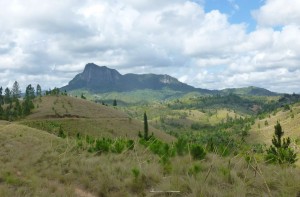
Education about the Importance of Lemurs, the Forest, and Alternative Livelihoods
The importance of education cannot be overlooked in the fight to save the lemurs. Education not only about the lemurs, the importance of the forests, and the damaging effects of tavy, but also education on alternative ways to obtain their food and make a living. MBP employed groups of single mothers who would work half-days in each nursery. Many of them told us that before MBP came along, they struggled to feed their children everyday. How can one expect a country to put protecting their forests as a priority in their life when many of them struggle to make it through each day? They need our support.
Fortunately for the people of the Kianjavato commune, MBP—in partnership with Conservation Fusion—aims to not only educate the community but also to provide technologies such as rocket stoves to help alleviate pressures on the forests. Experiencing the poverty first-hand really showed me how important community-based projects, such as MBP, are to the protection of Madagascar’s incredible biodiversity.
Assisting with Lemur Research
Although a lot of my time in Madagascar was spent in the field planting trees, I also had the opportunity to spend plenty of time in the forests assisting with lemur research! MBP‘s field station in Kianjavato also hosts many international and local academics who are studying Madagascar’s fascinating wildlife. From the elusive Aye aye and Fossa, to the Critically Endangered Greater Bamboo lemur and Black and White Ruffed lemur, I was constantly reminded of the amazing creatures we were working so hard to protect.
Saving Lemurs
Saving the lemurs is going to require addressing the root causes of habitat degradation, and so non-profit community-based organizations such as MBP need our help. From volunteering our time to donating money, anything we can do to help their organizations help the local communities is a step in the right direction.
Now sadly I am back home in Canada but I am eager to continue the efforts in protecting Madagascar’s wildlife with the hopes of beginning a Master’s project in the near future, because we are stronger together!
Take Action
Inspired by the Madagascar Biodiversity Project?
- See the MBP profile on the Lemur Conservation Network
- Donate Now!
- Select “Madagascar Biodiversity Project” in the drop-down menu when you submit your donation.
- Learn more on their website

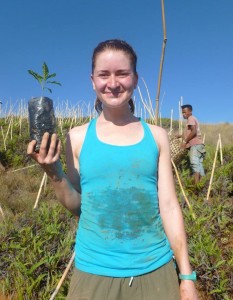
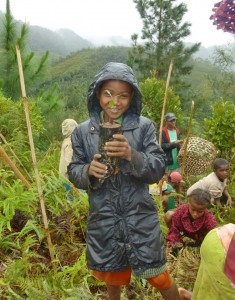 Volunteering in Kianjavato, Southeast Madagascar
Volunteering in Kianjavato, Southeast Madagascar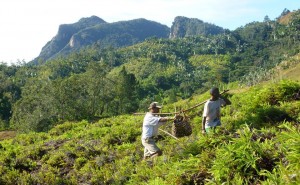 Tackling Lemur Habitat Loss with Reforestation
Tackling Lemur Habitat Loss with Reforestation